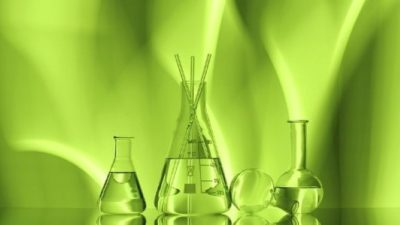| Course Credits | | 3 (3-0-6) |
| Course Abbrviation | | GEN CHEM II |
| Course Title (TH) | | เคมีทั่วไป 2 |
| Course Title (EN) | | GENERAL CHEMISTRY II |
| Responsible Unit | | Faculty of Science |
| Type of Course | | International Course |
| Semester | | Intl 2nd semester |
| Academic Year | | 2024 |
| Course Coordinator | | |
| Measurement Method | | Letter Grade (A - F) |
| Type of Course | | Semester Course |
| Course Condition | | None |
| Course Status | | |
| Instructors / staffs | | |
| Enrollment conditions | | None |
| Degree level | | Bachelor |
| Related curricular | | Bachelor of Science in Biotechnology (2562) |
| | Bachelor of Science in Biotechnology (2567) |
| Course description (TH) | | จลนพลศาสตร์ สมดุลเคมี สมดุลกรด-เบส สมดุลรีดอกซ์ เคมีไฟฟ้า การวิเคราะห์เชิง ประมาณโดยการไทเทรต เคมีอินทรีย์ ชีวเคมีเบื้องต้น เคมีสีเขียวเบื้องต้น พอลิเมอร์ เบื้องต้น และเคมีนิวเคลียร์เบื้องต้น |
| Course description (EN) | | Kinetics; chemical equilibria; acid-base equilibria; redox equilibria; electrochemistry; quantitative analysis by titration; organic chemistry; introduction to biochemistry, green chemistry, polymers and nuclear chemistry. |
| Curriculum mapping | / | CU-1.1: Behavioral Objectives Possessing well-rounded knowledge |
| / | CU-1.2: Possessing in-depth knowledge |
| | CU-2.1: Being moral and ethical |
| | CU-2.2: Having an awareness of etiquette |
| / | CU-3.1: Being able to think critically |
| / | CU-3.2: Being able to think creatively |
| / | CU-3.3: Having skills in problem solving |
| | CU-4.1: Having professional skills |
| | CU-4.2: Having communication skills |
| | CU-4.3: Having skills in information technology |
| | CU-4.4: Having mathematical and statistical skills |
| | CU-4.5: Having management skills |
| | CU-5.1: Having an inquiring mind |
| | CU-5.2: Knowing how to learn |
| | CU-5.3: Having leadership qualities |
| | CU-5.4: Maintaining well-being |
| | CU-5.5: Being community-minded and possessing social responsibility |
| | CU-5.6: Sustaining Thainess in a globalized world |
| / | subPLO1.1 Explain biotechnology knowledge in practice. |
| | subPLO1.2 Analyze biotechnology knowledge in practice. |
| | subPLO1.3 Apply biotechnology knowledge in practice. |
| | PLO2 Employ biotechnology-related technology and scientific tools. |
| | PLO3 Communicate effectively in English within the Biotechnology field. |
| | PLO4 Demonstrate behavior that aligns with ethical principles, moral values, and professional ethics. |
| | PLO5 Demonstrate social responsibility, courage, and creativity. |
| Course learning outcome (CLO) | | 1. Explain chemical equilibrium, acid-base equilibrium, sloubilty equilibrium, predict the results from factors affecting equilibria and calculate stoichimometric amounts at equilibrium state and equilibrium constant. |
| | 2. Explain and calculate the quantity relating to electrochemistry and predict the possibility of electrochemical reactions. |
| | 3. Identify isomers of organic compounds, explain and compare physical properties of organic compounds, biomolecules and polymers and also predict the products obtained from chemical reactions of organic compounds, biomolecules and polymers. |
| | 4. Predict the products obtained from nuclear reactions such as nuclear fission and nuclear fusion. |
| | 5. Explain chemical reactions related to green chemistry. |

